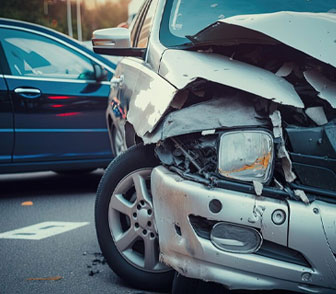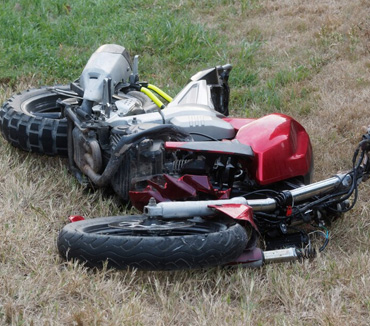Flawed Playground Designs Could Cause Child Injuries
Every year, thousands of children are injured on playgrounds. Even though playgrounds are designed to provide the optimal amount of enjoyment for the children while posing the minimal amount of potential danger, accidents are still bound to occur. Although minor bumps, bruises, and cuts frequently occur on playgrounds, many playground injuries are more severe. Broken bones, sprains and strains, internal organ injuries, dislocations and concussions are the most common playground-related injuries that require a doctor’s care.
As always, there are ways to prevent these types of accidents, through preparation and vigilance. The basic layout of a playground can sometimes present hazards to children. From the basic slides and sandboxes of old to the more advanced monkey-bar linked complexes featured in modern playgrounds, any area heavily trafficked by children needs to be monitored carefully and maintained properly.
The surface underneath the playground equipment is another potential danger. Blacktop or concrete is unsafe.
The ground beneath equipment should be made of one of the following to cushion falls:
- Rubber
- Sand
- Wood Chips
The following injuries are often seen on playgrounds:
- Bruises
- Broken or fractured bones
- Concussions or other head injuries
- Dislocations
- Internal injuries
Common Causes of Playground Injuries
Any number of factors can play a role in causing playground injuries, but there are some elements that are more common than others. Let’s take a look at some of them.
- Improper Protective Surfacing: Hard surfaces under and around playground equipment can cause injuries if children fall. These surfaces should contain materials that are soft enough to cushion a fall, such as hardwood fiber/mulch, sand, or pea gravel. Synthetic or rubber tiles, shredded rubber, and mats can also be safely used under play equipment.
- Lack of Maintenance: Just like any other outdoor structures, playgrounds develop wear and tear over time. Metal parts become rusty. Screws and nails come loose. Wood often rots. Ropes become frayed from exposure to the sun. If these elements are not fixed promptly, they lead to injuries.
- Pinch, Crush, and Sharp-Edged Hazards: This one plays along with the lack of maintenance. Play equipment should be regularly inspected to ensure that there are no sharp edges or points that could cut a child. All moving components, such as suspension bridges, track rides, merry-go-rounds, seesaws, and some swings also need to be inspected to make sure that there are no moving parts or mechanisms that might crush a child’s fingers.
- Protrusion/Entanglement Hazards: A protrusion hazard is anything that could impale or cut a child who might fall or rub against it. An entanglement hazard is anything that could catch an item of clothing or jewelry worn around a child’s neck, such as a drawstring from a hood or a necklace. These items can easily catch on an exposed bolt end or open “S” type hook on play equipment. Pay special attention to the area at the top of slides, where gaps and spaces could catch clothing. Ropes should be anchored securely at both ends so they cannot form a loop or noose.
- Trip Hazards: Exposed concrete footings, abrupt changes in surface elevations, containment borders, tree roots, tree stumps, and rocks are all common trip hazards that are often found in play environments.
- Platforms with No Guardrails: All elevated surfaces (platforms, ramps, and bridge ways) need to have guardrails or barriers to prevent falls. Preschool age children are at greater risk from falls, so equipment intended for this age group should have guardrails on elevated surfaces higher than 20 inches and protective barriers on platforms higher than 30 inches. Equipment intended for school-age children should have guardrails on elevated surfaces higher than 30 inches and barriers on platforms above 48 inches.
- Insufficient Equipment Spacing: If there is not enough space between pieces of play equipment, children can fall off one structure and strike another. Each item of play equipment has a use zone around it, and for certain types of equipment, these use zones may overlap.
- Lack of Supervision: Increased supervision on the playground directly relates to increased safety and fewer injuries. Play areas should be designed so that it is easy for caregivers to observe children at play. Position supervisors so they can immediately respond to emergencies. Make sure that elevated play equipment is supervised at all times.
- Age-Inappropriate Activities: Public play equipment should be labeled by age of the children who can safely use it. Areas for preschool age children (2-5) should be separate from areas for school age children (5-12).
Who is Liable for Playground Injuries?
Before you can pursue compensation for your child, you will have to figure out who is to blame for your child’s playground accident and why they should pay.
It is important to look carefully at the causes and circumstances surrounding your child’s injuries. You may find that more than one person, business, or entity (like a school district) may be financially responsible.
It helps to understand some legal terms used in connection with injury claims:
- Duty of Care means a legal obligation to avoid causing harm to others. A school has a legal obligation to ensure playground equipment is safe.
- Negligence happens when a property owner or manager, or playground equipment manufacturer fails in their duty of care.
- Liability means responsibility. The negligent party, like a property owner, is usually liable for the injured child’s damages from a playground accident.
- Damages for injuries from playground equipment can include medical costs, out-of-pocket medical expenses, and pain and suffering.
Property owners and managers (homeowners, schools, daycare providers, mall and restaurant owners, and any other business entity that offers a playground area for visiting children) have a duty of care to make sure all playground equipment and the surrounding area are safe for children. Their duty means they must do everything reasonably possible to ensure the safety and well-being of children invited to use the playground, including repairing or removing dangerous equipment.
Failing to install, inspect, or maintain playground equipment properly can make the property owner or manager liable for injuries caused by their negligence.
Evidence for a Playground Accident Claim
To succeed in your child’s injury claim, you need credible and convincing evidence. Whether you believe the equipment manufacturer’s negligence or inadequate equipment maintenance was responsible for your child’s injury, you have the burden of proof.
- Photographs and Video: Photographs and video of your child’s injury and where it happened are graphic evidence (ie a broken swing or protruding bolt). Take as many pictures and videos of the dangerous playground equipment as you can. Your photos can reveal the nature of the design flaw or product defect.
- Building Codes: Building code violations are often prima facie (a Latin term meaning “at first look”) evidence of negligence, meaning the negligence is obvious unless proven otherwise. Manufacturers of playground equipment and the entities responsible for its maintenance both have a legal obligation to do everything reasonably possible to ensure children will remain safe from bodily injury.
- Witness Statements: Written testimony from witnesses, especially independent Good Samaritans, can be valuable evidence. Independent witnesses have no financial interest in the outcome of your child’s injury claim, making them credible and convincing.
- Proof of Damages: Your child should have prompt medical attention after a playground equipment injury. If your child wasn’t taken directly to the hospital from the playground, take them to their pediatrician, urgent care center, or hospital emergency room as soon as possible. Make sure your child’s medical records link their injury to the design flaw, defect, or disrepair of the playground equipment. Tell every provider who cares for your child exactly when, where, and how the child was hurt.
Contact a Lawyer in California
As parents, you want to keep your child safe at all times. If your child is injured in a playground accident, you’ll want to know what legal options are available. Our legal team at Duque Law Group is comprised of award-winning and nationally recognized trial lawyers who collaborate with nurses, doctors and medical experts regularly. Though we understand the nature of injuries, we are not physicians, and always encourage victims to seek treatment as soon after an accident as possible, and to follow up and heed their doctors’ advice.
Call us now at 1-877-241-9554 to learn more about your options. A free consultation is just a phone call away.
Request A
Free Consultation
Fields Marked With An ” *” Are Required










